CLAY COUNTY AFRICAN AMERICAN LEGACY TOUR
Use this arrow to learn more at each stop.
This tour was underwritten by the Institute of Museum & Library Services.

You may wish to park on or near the Liberty Square since the tour will end here. That way you’ll be walking back toward your car. A more comprehensive overview of the tour can be found in either this color brochure -or- this brochure which contains a map image on the last page. To see full background and site information, the Liberty Legacy Memorial site will be linked frequently and is highly recommended for an extensive look at Black History in Liberty. Other links are used for educational purposes to further provide context.
This walking tour covers approximately 1 mile and highlights 175 years of African American history in Liberty. The content summarized here is from work primarily researched and compiled by Dr. Cecelia Robinson, professor of English at William Jewell College (retired), in conjunction with Clay County African American Legacy, Inc.
African Americans first came to Liberty in 1817 with Southern slave owners from Tennessee, Kentucky, North Carolina, and Virginia. These enslaved people and their descendants, such as those listed, became the pioneers who founded the Black community that has been an integral part of Clay County for almost 200 years: Estes, Beauchamp, Withers, Capps, Bird, Thompson, Houston, Dorsey, Boggess, Samuel, and Allen.
African Americans first came to Liberty in 1817 with Southern slave owners from Tennessee, Kentucky, North Carolina, and Virginia. These enslaved people and their descendants, such as those listed, became the pioneers who founded the Black community that has been an integral part of Clay County for almost 200 years: Estes, Beauchamp, Withers, Capps, Bird, Thompson, Houston, Dorsey, Boggess, Samuel, and Allen.
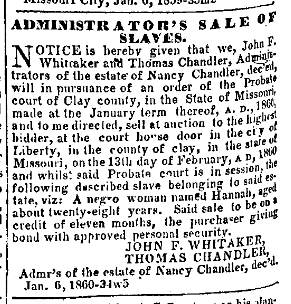
By 1850 Liberty’s African American population comprised just over 20% of the total population of 827; there were only 14 free Blacks in all of Clay County. In 1865, the Missouri legislature passed the Slave Emancipation Act which ended slavery in Missouri before the 13th amendment at the federal level was ratified. That date, January 11, is now known as Manumission Day.
Before integration and the passing of civil rights laws, segregation forced Liberty’s Blacks to provide their own small, home-owned “mom and pop” restaurants, entertainment, and community services located on the town’s northern and southern blocks. These neighborhoods were on some of the streets you’ll visit today: Water, Gallatin, Prairie, Grover, and South Main.
Before integration and the passing of civil rights laws, segregation forced Liberty’s Blacks to provide their own small, home-owned “mom and pop” restaurants, entertainment, and community services located on the town’s northern and southern blocks. These neighborhoods were on some of the streets you’ll visit today: Water, Gallatin, Prairie, Grover, and South Main.
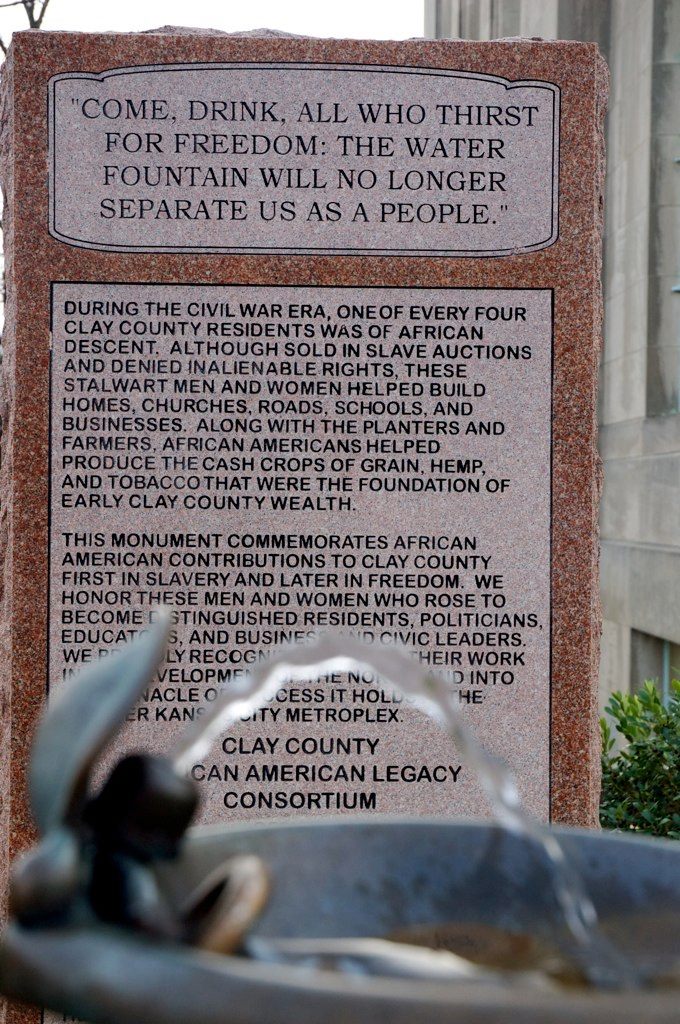
This tour guide presents a portrait of the historic African American sites located in the Garrison Historic District that are listed on both the national and local registers of historic places, dating from the antebellum days to the present.
For the first stop, walk four blocks north on Main Street (where the street ends) to the Garrison School.
Previous slide
Next slide
Stop 1
The Garrison School
502 N Water St. Liberty, MO
DIRECTIONSThe Garrison School
502 N Water St. Liberty, MO
Garrison School, established in 1877 near the end of Reconstruction, was the first public school for African American youth in Liberty and is the only historically Black school still standing in Clay County. In the fall of 1954, the famous Supreme Court case Brown vs. Board of Education of Topeka, KS found that “separate but equal” schools were unconstitutional and needed to desegregate “with all deliberate speed.” Thus, Liberty School District initiated integration by desegregating the high schools first. Garrison became a 4th-grade center in the fall of 1958, and the kindergarten for all Liberty students in 1961. More is found below by clicking the + button to “add on” to your knowledge about Garrison School.
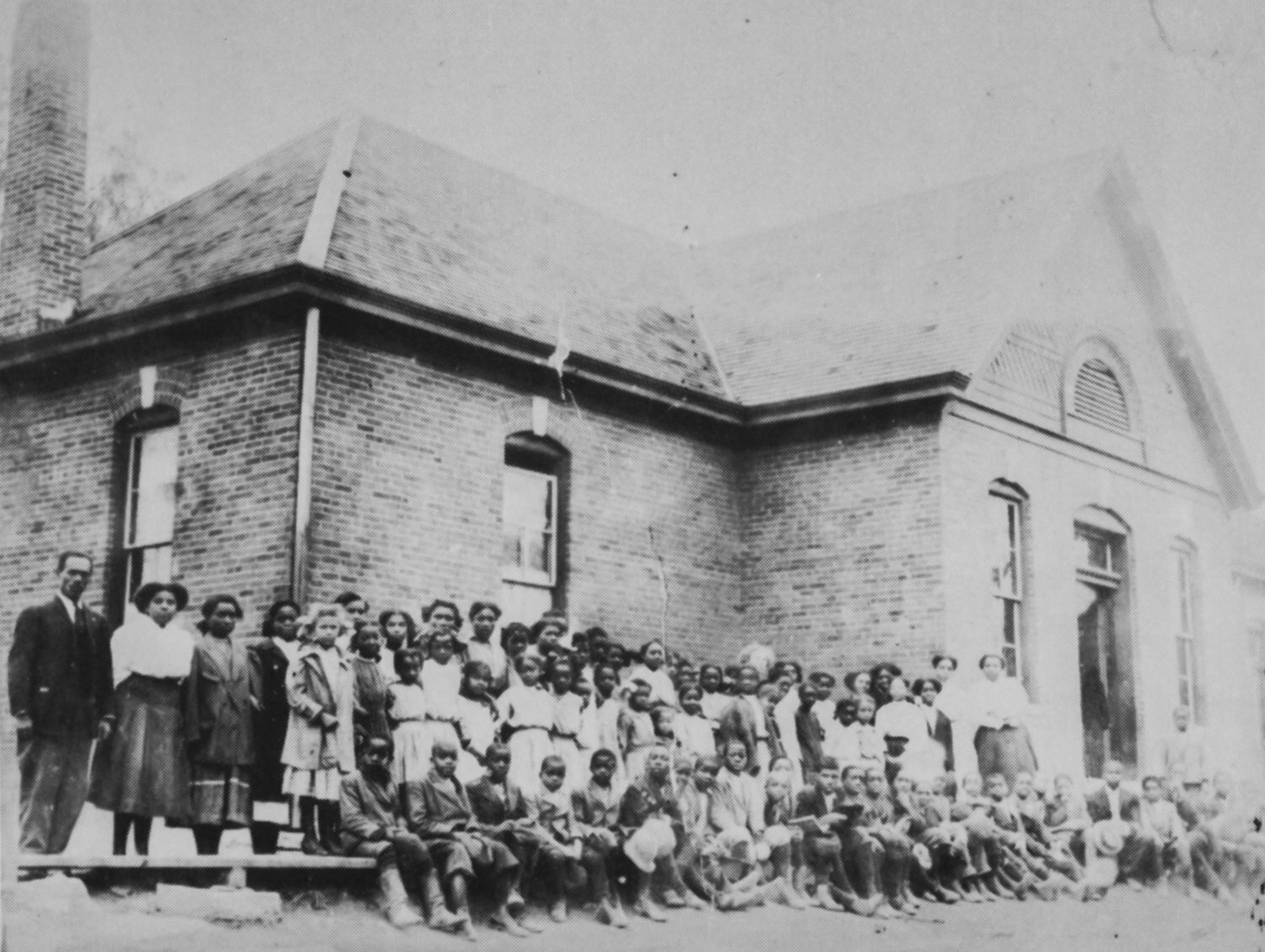
Garrison School 1880

Garrison School 1930
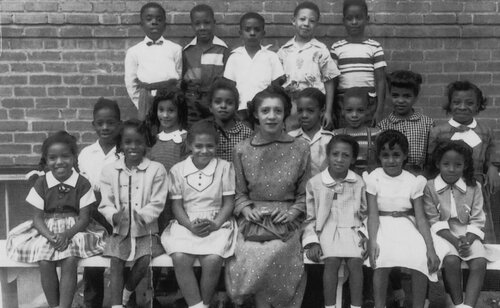
Clara Bell Colley Garrison School Class
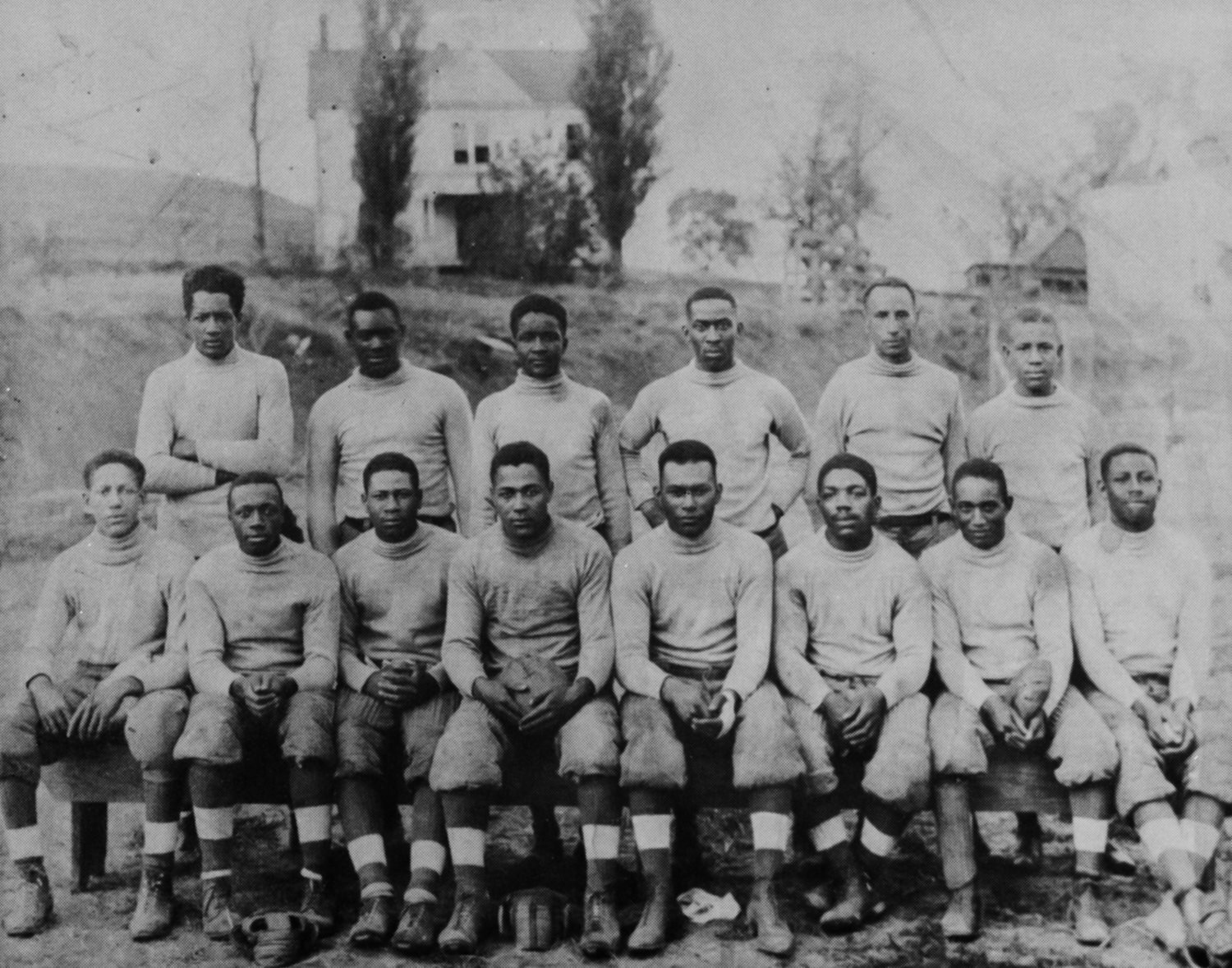
Garrison School football
Today, owned by Clay County African American Legacy, Inc., Garrison still serves the community as a visual and cultural center preserving African American history. It celebrates culture and promotes human relations, characteristics symbolized by the Sankofa bird you see here. Garrison celebrated its 141st anniversary in 2018.
The Sankofa Bird found in West Africa is the centerpiece art installation and the logo for the Liberty African American Legacy Memorial (read more about it by clicking below!). It’s a symbol to honor the African Diaspora as a whole, the Middle Passage, and our Indigenous presence. Moreover, we chose this symbol to represent the 700+ African American pioneers buried in this hallowed ground who surround us. Used by the Akan people of Ghana, it is depicted as a bird flying forward with its head turned backward. The egg in its mouth represents the ‘gems’ or knowledge of the past upon which wisdom is based; its forward-facing feet also signify the generation to come that will benefit from that wisdom or knowledge.
Walk back south toward the Square. Turn right on Mississippi Street and then right/north in 2 blocks, onto Gallatin St. Continue a few blocks to 415. N Gallatin St. We will retrace our steps back to a few more locations on this street.
Previous slide
Next slide
Stop 2
James A. Gay home
415 Gallatin St. Liberty, MO
DIRECTIONSJames A. Gay home
415 Gallatin St. Liberty, MO
This Colonial Revival Bungalow was the home of Professor James A. Gay, a graduate of Lincoln University in Jefferson City, Missouri. He was the principal of Garrison School for 22 years, and he taught Religion, Latin, and Greek at Western Bible Baptist College in Macon, Missouri (prior to its later move to Kansas City). Professor Gay is responsible for naming the school after the great abolitionist and journalist, William Lloyd Garrison.
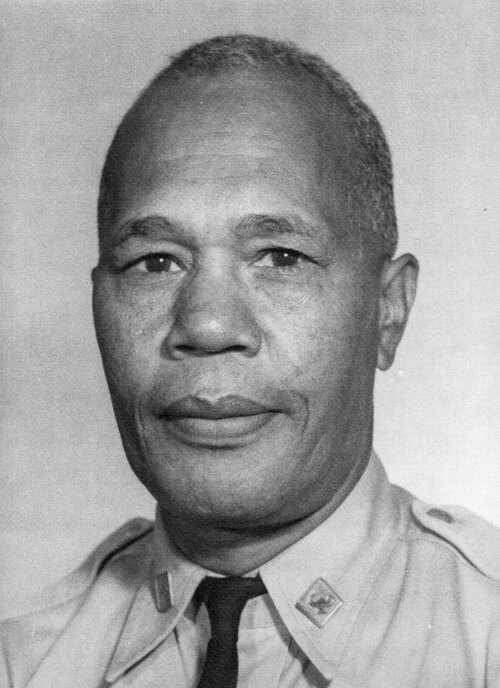

Retrace your steps back south to the church at 336 N. Gallatin.
Previous slide
Next slide
Stop 3
First Baptist/Mt. Zion Church
336 Gallatin St. Liberty, MO
DIRECTIONSFirst Baptist/Mt. Zion Church
336 Gallatin St. Liberty, MO
Established in 1843 under the pastorate of Rev. William Brown, who was a young man not even twenty years of age. Even earlier, church members worshiped in the historic Liberty “Town Square.” Dr. Cecelia Robinson shared research stating that even prior to emancipation, the enslaved, masters, and free blacks worshipped together in the northeast corner of the old Clay County Courthouse, often sharing the communion cupix. Later, the congregation moved to an old barn on Missouri Street. In 1869, the congregation purchased a lot on North Gallatin about three blocks from the public square and built a church northeast of the home of the town physician, Dr. William Wallace Dougherty. The cornerstone was laid by Rev. Daniel Sawyers, Rev. H.H. White, and Rev. Hardin Morten. The present church was built in 1915 during the pastorate of Rev. J. L. Dudley.
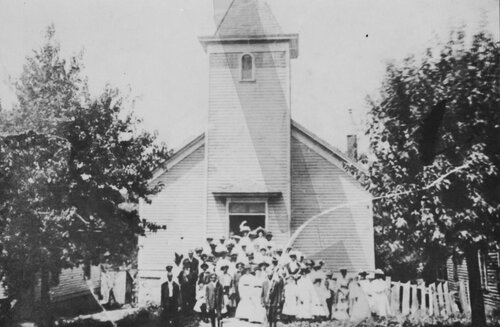
As in most communities, churches served as the most important institutions for their members. Not surprisingly, in 1843 slaves were among the first citizens in Liberty to organize a Baptist church under the leadership of Rev. William Brown, a young man less than twenty years of age. Before the Liberty congregation built a sanctuary, slaves, masters, and free blacks worshipped in the northeast corner of the courthouse, often sharing the communion cup. Later the church moved to an old barn on Missouri Street where they worshipped until the group purchased a lot and built First Baptist/Mt. Zion on Gallatin Street.
Continue by walking west through the alley next to the church to Prairie Street. Turn right (north) and walk half a block on Prairie. Then make a left (west) at the alley. It will dead-end on Grover Street at Ruth Moore Park.
Previous slide
Next slide
Stop 4
Ruth Moore Park
401 Grover St. Liberty, MO
DIRECTIONSRuth Moore Park
401 Grover St. Liberty, MO
Every day is “Hoops Day” at Ruth Moore Park. Situated in the heart of the Garrison District, this site provides a welcome retreat for neighborhood youth and families throughout the year. The historic markers here honor Sam Houston. He was Liberty’s first Black city councilman and served for almost 2 decades. In 1987, he helped organize Missouri’s first suburban Juneteenth celebration.
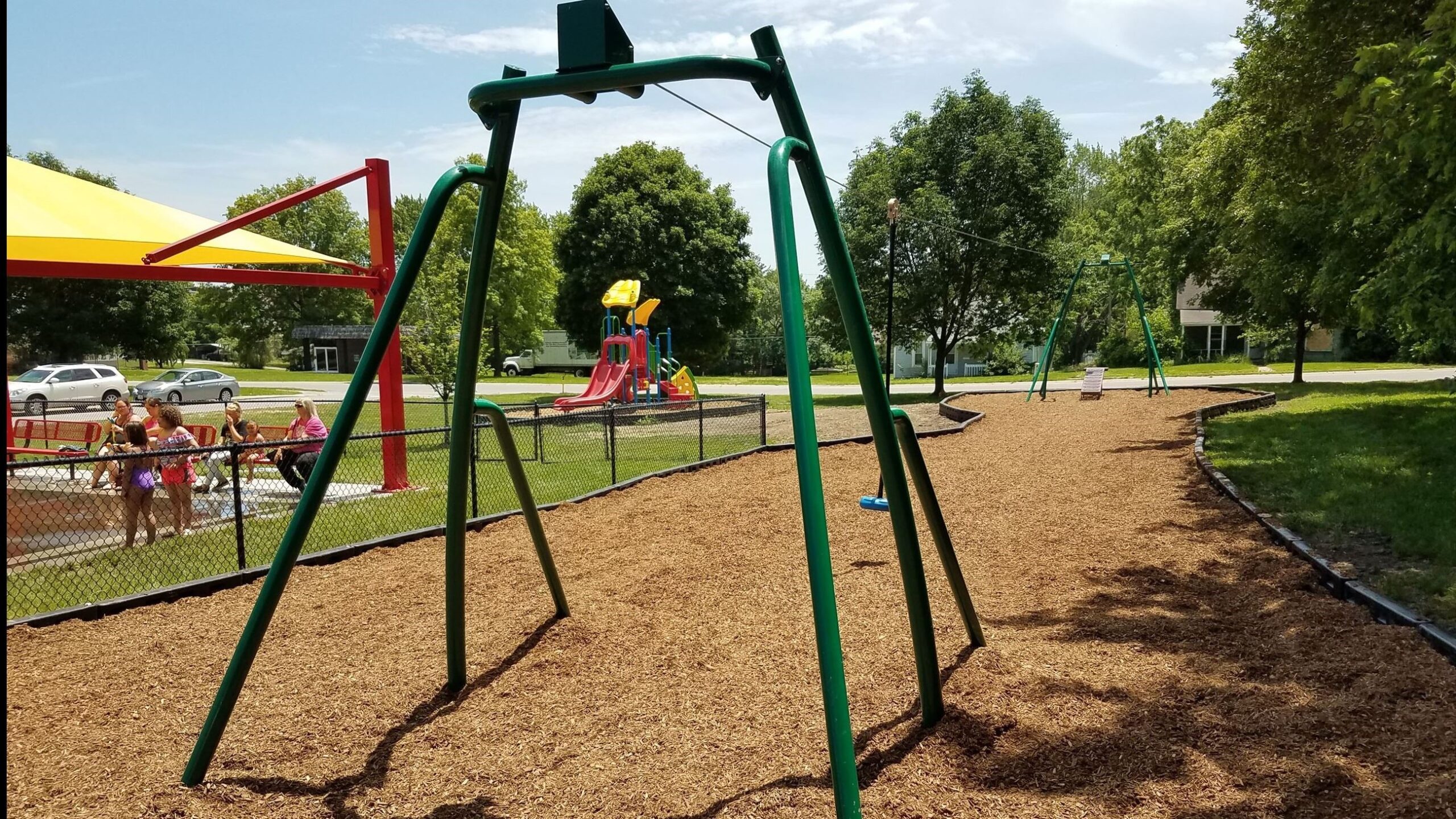
We’ll visit his house next, but here, community picnics, family reunions, basketball tournaments, and hoop games characterize the park. It was purchased in 1949 for Garrison District residents by the Liberty Parks Department. During summer months, kids can play in the playground while parents gather vegetables and fruit in the community garden and orchard that is free and open to the public. The basketball courts provide a haven for youth enthusiasts, and the Will Smith Annual Hoops Tournament is always a winner.
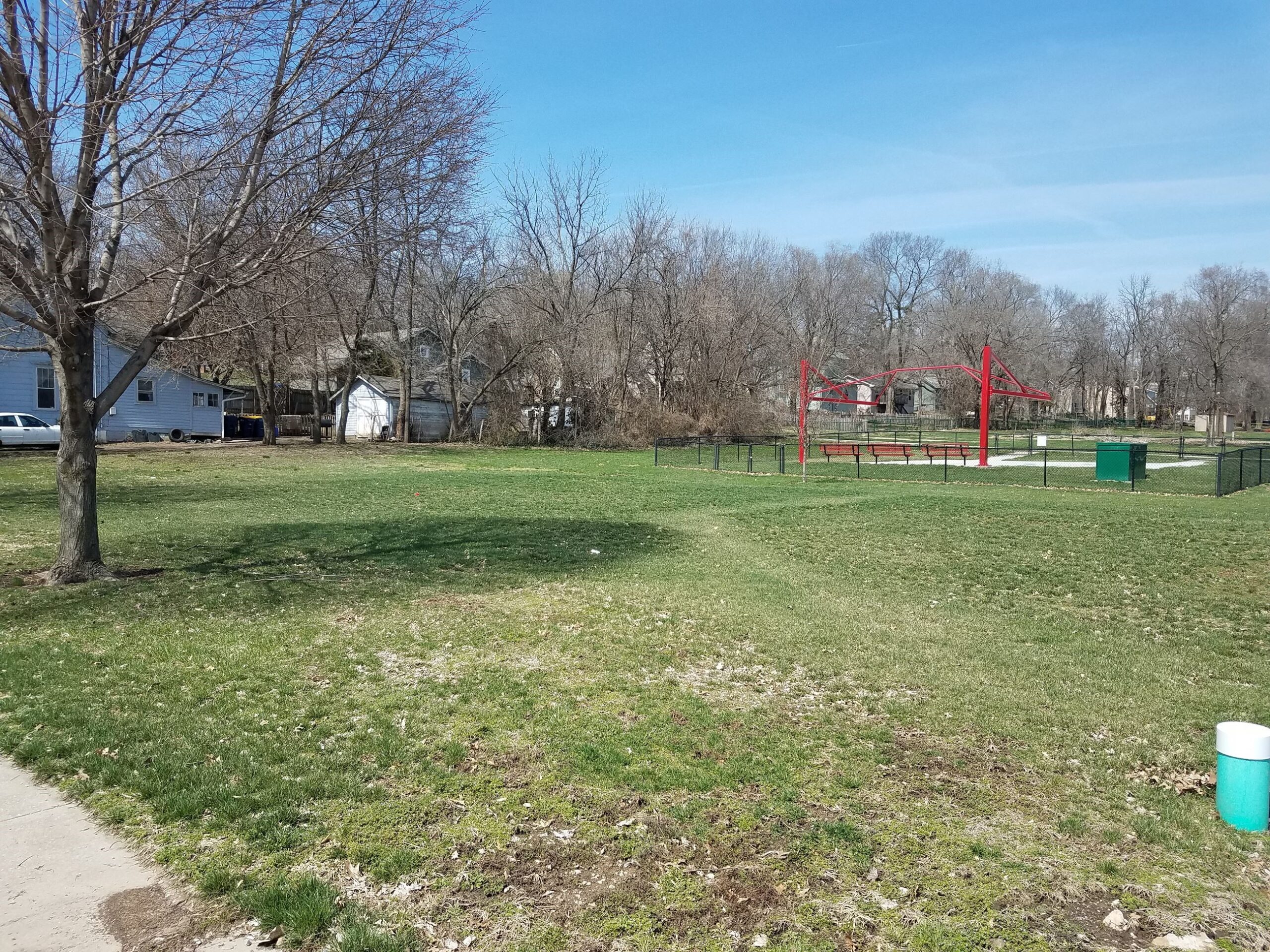
Retrace your steps east back to Gallatin, then turn right (south) and walk to 310 N. Gallatin.
Previous slide
Next slide
Stop 5
Sam Houston home
310 Gallatin St. Liberty, MO
DIRECTIONSSam Houston home
310 Gallatin St. Liberty, MO
This 1903 Folk Victorian house was owned by Sam Houston, one of Liberty’s most outstanding citizens. His grandparents helped build First Baptist Church, established in 1843. Sam was the first African American to be elected to the City Council and served for 18 years. During his tenure, he initiated the first Juneteenth celebration and the first Martin Luther King, Jr. Birthday Celebration north of the River, starting in 1984. He has received numerous civic awards, and in 1980 Former Missouri Governor Teasdale appointed him to the Commission on Human Rights.
Continue south on Gallatin about 3 blocks to Franklin Street. Then walk east (left) up the hill to the Clay County Administration Building (the old Court House). If the Building is open, you will definitely want to take the stairs or the elevator to the third floor.
Previous slide
Next slide
Stop 6
African-American Legacy Mural
1 Courthouse Sq. Liberty, MO
DIRECTIONSAfrican-American Legacy Mural
1 Courthouse Sq. Liberty, MO
On the third floor, visitors can find the African American Legacy Mural by artist David McClain. This mural depicts an overview of Clay County in the 19th and 20th centuries. You see African American pioneers, businesses, churches, and schools, including:
- White Oak Chapel (the restored Chapel has been relocated to the grounds of Strouds on I-35)
- Cemetery from the Fountain Waller Plantation (1836) located on Shady Lane Street, in the Carriage Hills subdivision of Gladstone
- Dr. D.A. Ellett's Sulpho Saline Bath House and Swimming Pool in Excelsior Springs (1880)
- First Baptist Church (1843)
- Peter Biggs, the first American owner of a barber shop in the Old West (1847)
- The first African American School in Missouri City (1877).
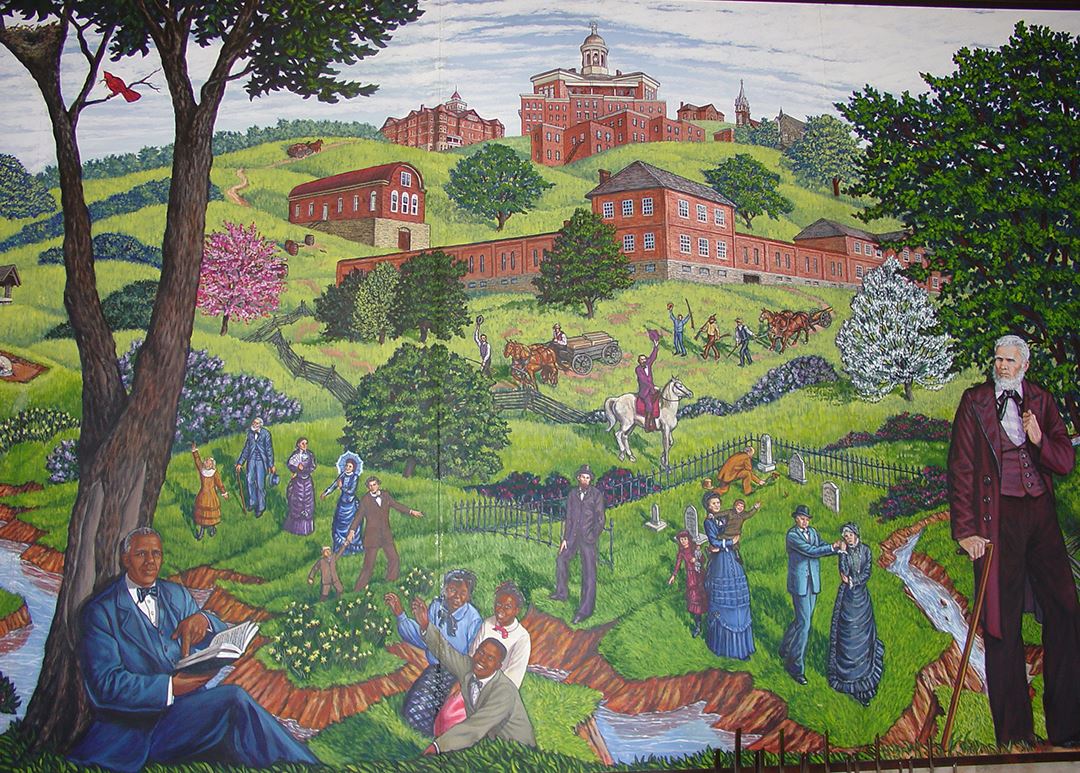
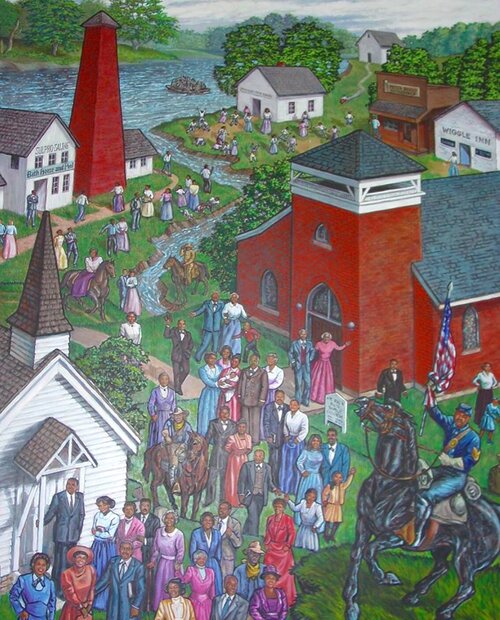
Return to the north side (Franklin Street) of the Court House lawn.
Previous slide
Next slide
Stop 7
Freedom Fountain
1 N Water St. Liberty, MO
(NE corner of the courthouse lawn)
DIRECTIONSFreedom Fountain
1 N Water St. Liberty, MO
(NE corner of the courthouse lawn)
Erected in 2000 by the CCAAL, this fountain honors African Americans who have contributed to the growth and development of 4 cities in Clay County: Liberty, Excelsior Springs, Missouri City, and North Kansas City. It is placed near the location where, over a century ago, the local slave trade took place. For example, in January 1859, $20,000 worth of enslaved people were sold on this lawn in one day. This single water fountain, for use by all people, is meant to remind us of an earlier era when residents drank separately from segregated (white and “colored”) water fountains.
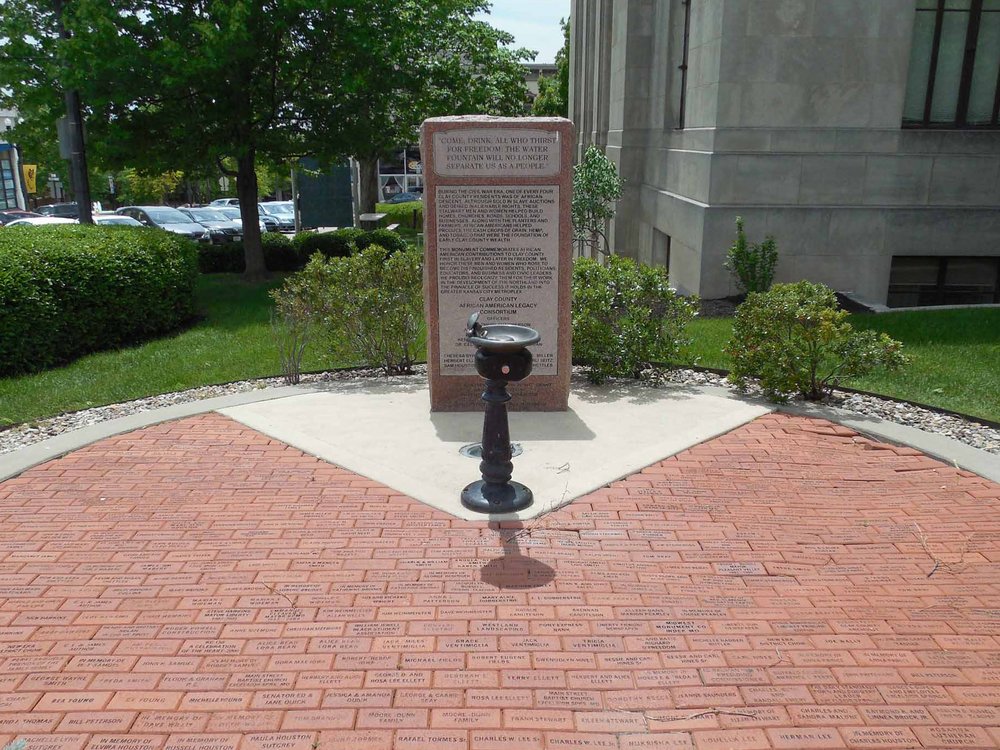
The June 2000 dedication of this Freedom Fountain featured Governor Bob Holden, providing the first drink to Mrs. Lulu Johnson Felder. At age 102, she was the oldest living African American resident of Clay County. She was born and raised in the first free black community in Clay County (White Oak of North Kansas City), which was located in the same area as Stroud’s Restaurant on I-35.
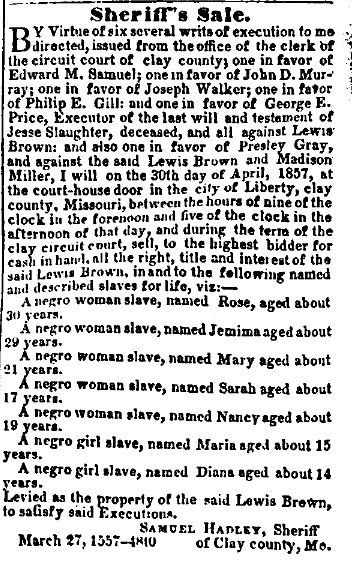
Take a moment to read the list on the back of the monument. How many names do you recognize because of this tour? Are there other names you recognize? Enjoy your own drink of cool water from the Freedom Fountain.
Previous slide
Next slide
Stop 8
Lawrence "China" Slaughter Park
NE corner of Mill and Gallatin St. Liberty MO
DIRECTIONSLawrence "China" Slaughter Park
NE corner of Mill and Gallatin St. Liberty MO
Dedicated in 2018, it was donated to Liberty Public Schools by Sylvia Willoughby to honor Lawrence “China” Slaughter. It provides a place for children, teachers, parents, and neighbors to enjoy a good book, wait for the crossing light, or take shelter from the summer sun. The focal point of the park features Martha Aldridge’s life-sized bronze sculpture of Mr. Slaughter standing at the entrance with two children. Beloved by students and the community, China worked over four decades as a custodian at Franklin Elementary School where he was commissioned as a crossing guard by the Liberty Police Department.
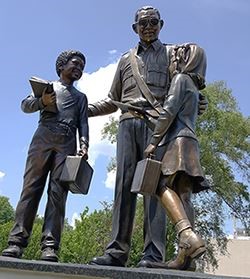


Previous slide
Next slide
Stop 9
Fairview Cemetery
235 W Shrader St. Liberty, MO
DIRECTIONSFairview Cemetery
235 W Shrader St. Liberty, MO
Fairview was established in 1858 as the second-oldest cemetery in Clay County. In the segregated, “colored” section on the eastern side of this hallowed ground, the legacy of at least 650 Black men and women is buried in unmarked graves. If the souls of these Black folk could speak, visitors taking a stroll through this site would hear a cacophony of voices of unsung African American heroes and heroines such as:
- Perry Samuels, the stepbrother of Frank and Jesse James
- Oleta Clarkson, owner of Wiggle Inn Night Club
- John Houston, one of 14 Free Blacks in Clay County in 1844
- William Slaughter, Union Soldier
- James Alexander, Horse and Buggy Rental (1890)
- Katie Brooks for whom Brooks Landing is named, and others.
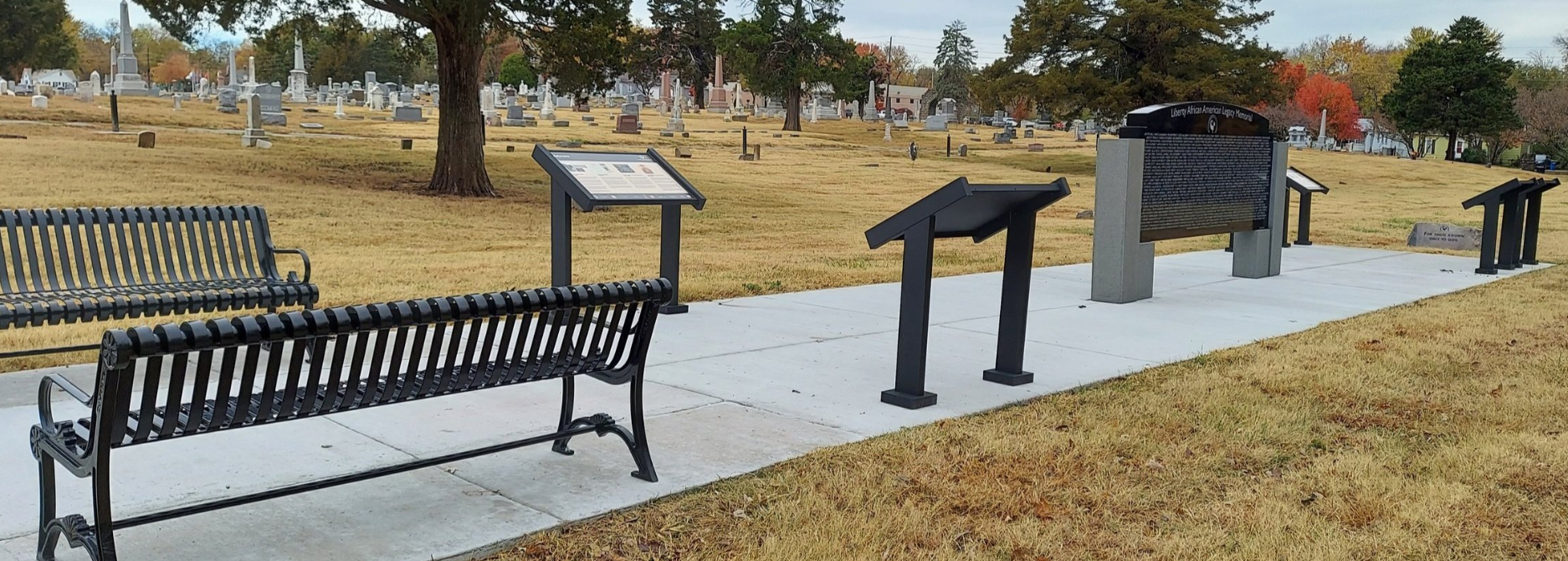
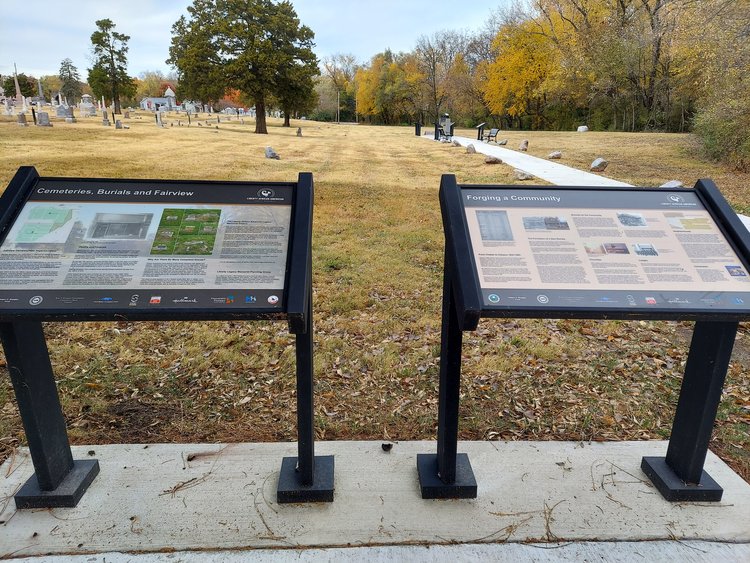
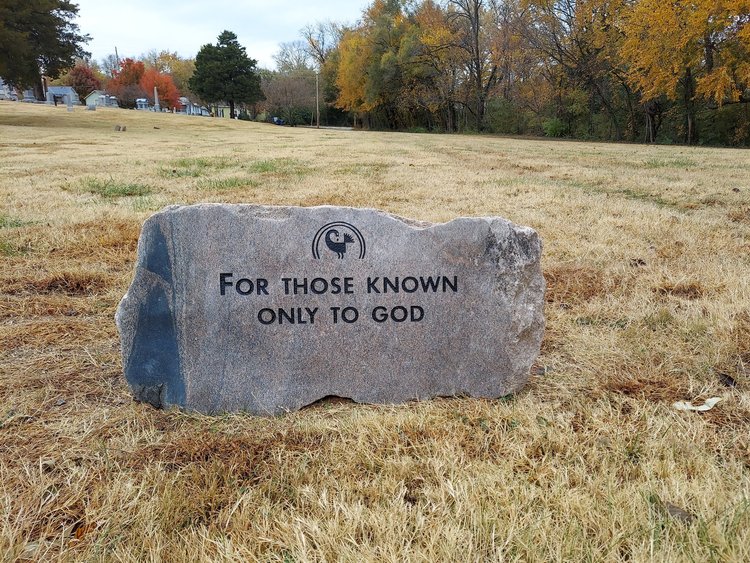
Previous slide
Next slide
Stop 10
Humphrey Temple Church of God in Christ
213 W Shrader St. Liberty, MO
DIRECTIONSHumphrey Temple Church of God in Christ
213 W Shrader St. Liberty, MO
In the 1930s, the first Holy Pentecostal Church congregation met in a house on South Main and moved into a trolley car when that home deteriorated. It was re-named in the 1940s by Elder Rolla “Rollie” Humphrey who lived to be 104 years old. In 1962, Elder Humphrey and his wife built this church. The COGIC denomination has a rich history dating back to its founding in 1907 by Bishop Charles Harrison Mason, an African American from Tennessee. With over six million members worldwide, COGIC churches are one of the largest Pentecostal churches founded by African Americans in the world.
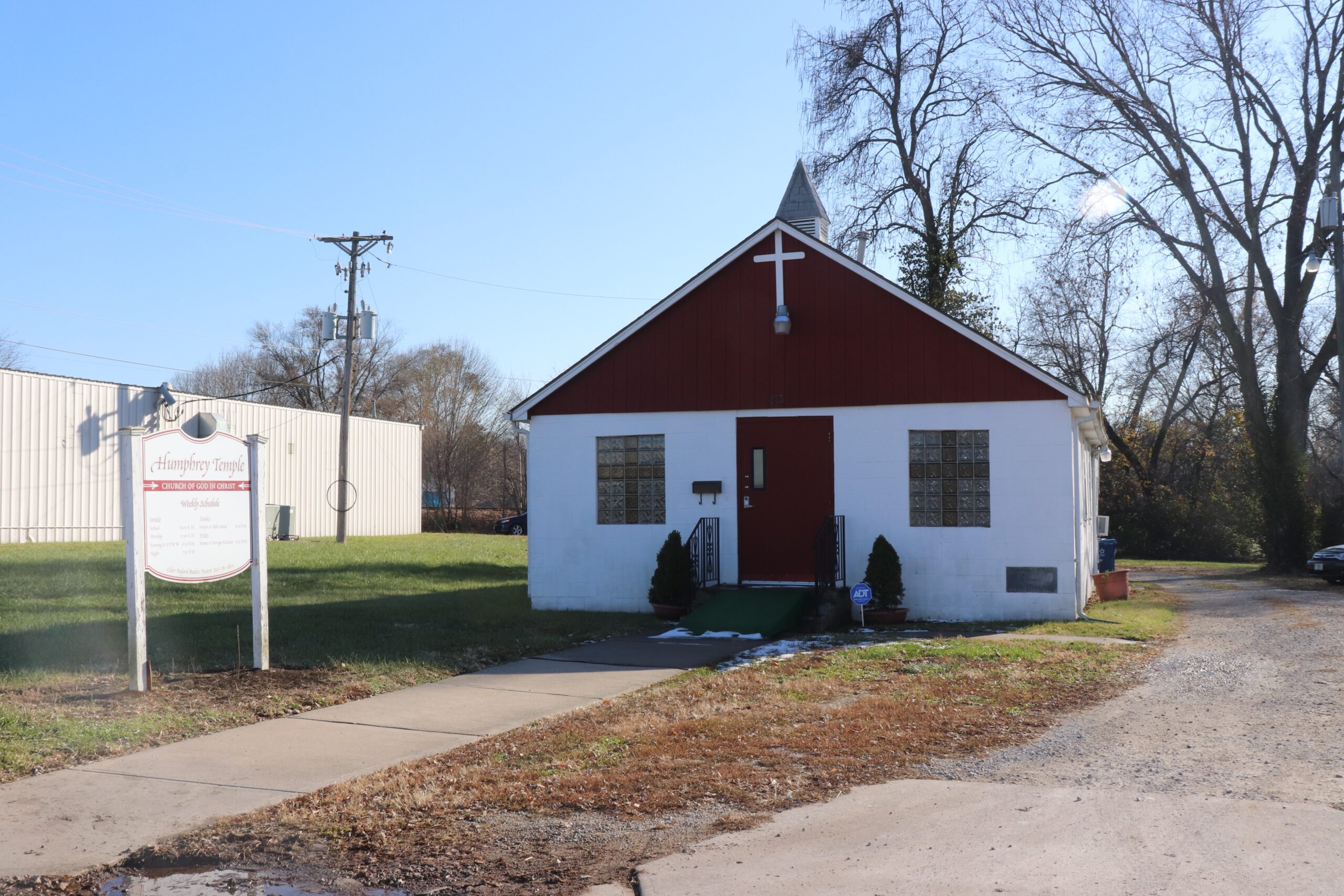

Continue by walking west through the alley next to the church to Prairie Street. Turn right (north) and walk half a block on Prairie. Then make a left (west) at the alley. It will dead-end on Grover Street at Ruth Moore Park.
Previous slide
Next slide